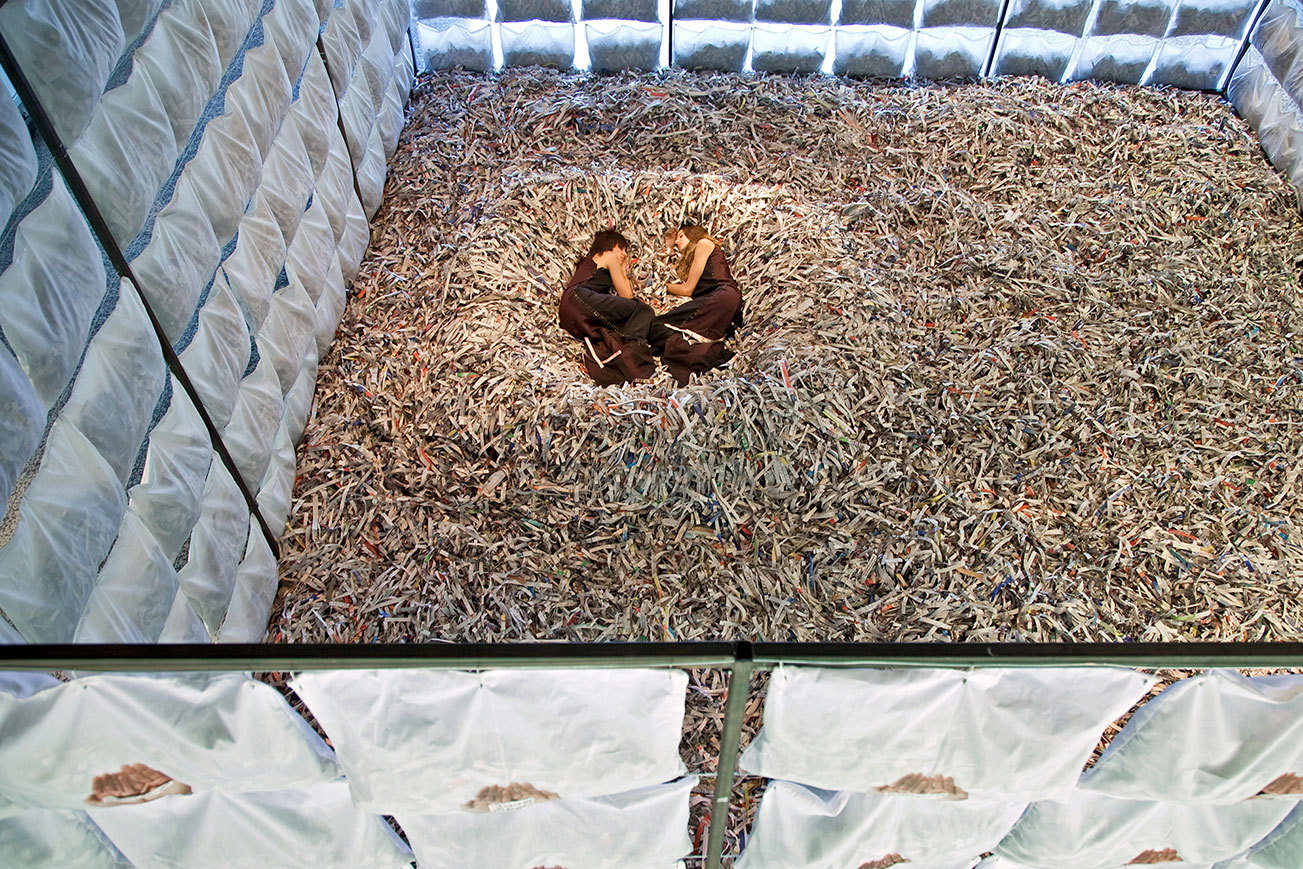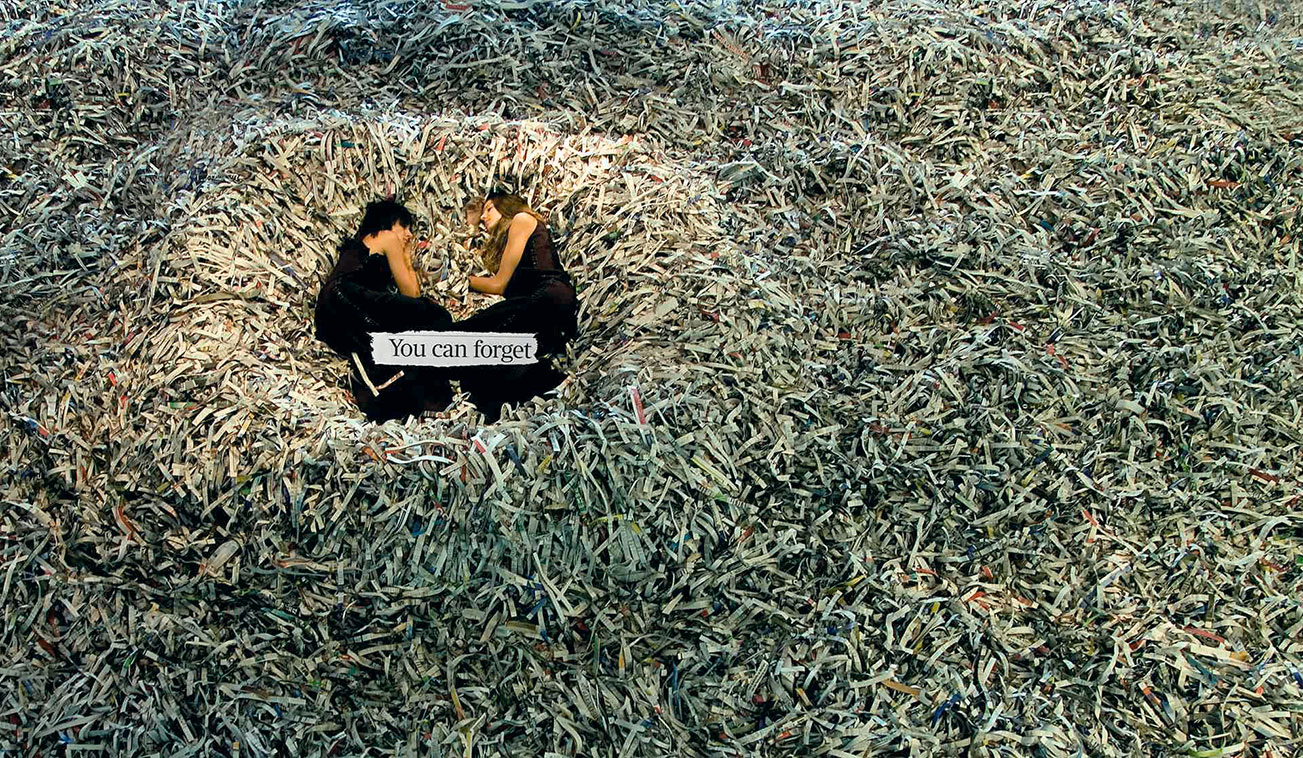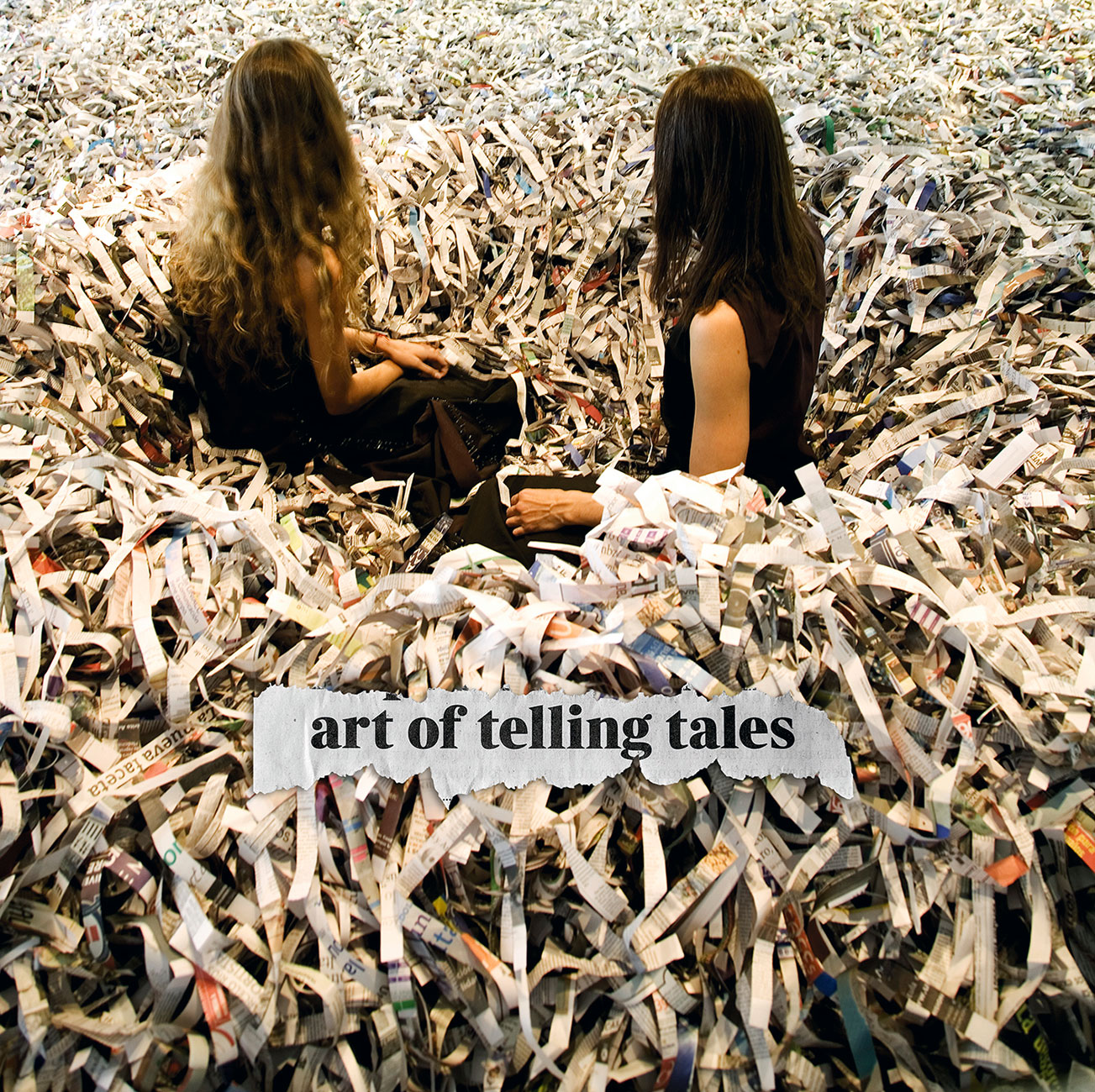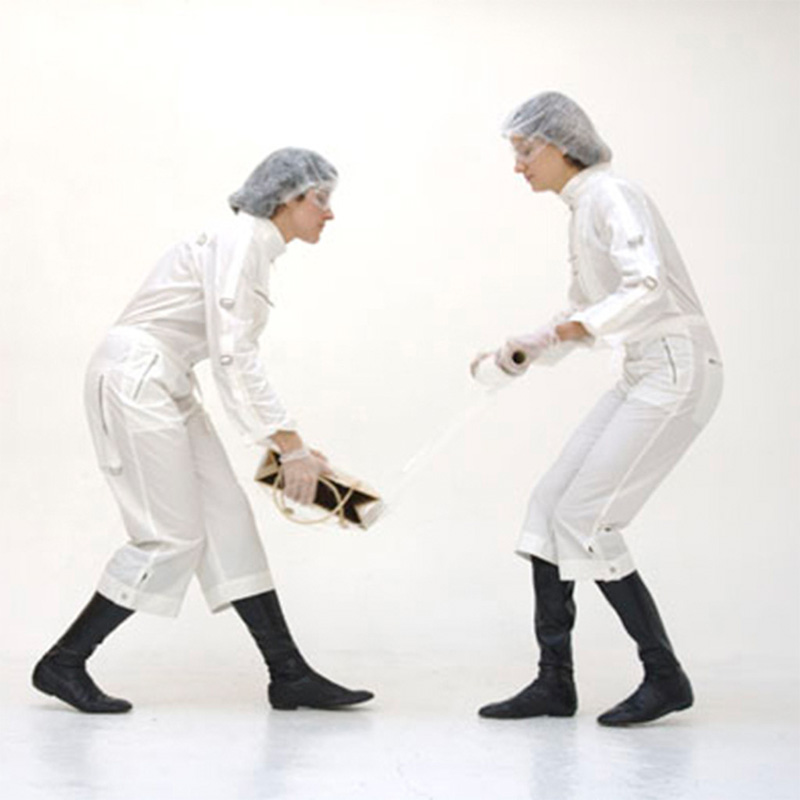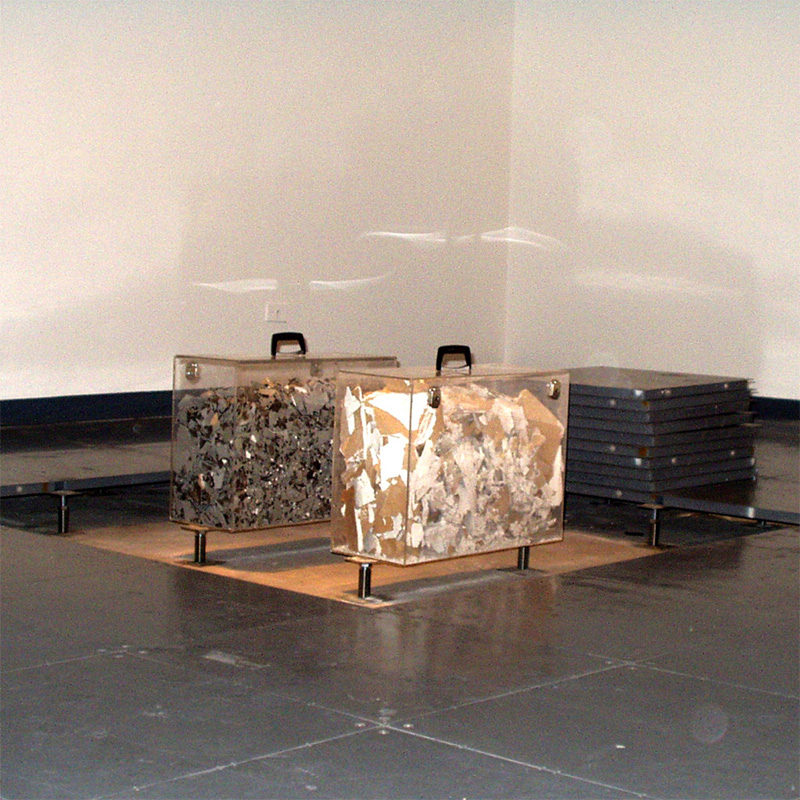In its conception, Status quo remounts the constitution of memory by following the consignation of certain essentially social acts, and in cultural and political consequence, we try to move closer to its origins and its causes. While the construction process of the work is different from previous works, once again the duo of Aninat & Swinburn utilize the installation created as a stage, in which they act out a performance on the day that the piece is inaugurated. The script of the performance is dictated by the materiality of the work. Closing the dwelling-temple, impeding access to the spectators, the artists tied to its interior, in which tonnes of shredded newspaper filled the space – a shelter, hideout, refuge, den – in which they were immobile. Assimilating a lair, this space, inhabited for the first time by the artists, in the interior of the installation, activated the space as a container of dreams, in which the work researching its origins, once again becomes an evocative piece by inviting the spectator to deposit their memory, recent events, present or past, into it. The performance CONTENIDO LATENTE; represents the acts of dreaming as much as the will to do so. For the act of dreaming exists the specific term of fantasy, although generic terms are used also (to have a dream = dream). The adjective corresponding to fantasy-dream is dreamlike. By analogy of dreams – that often fulfil the dreamer’s fantasies – any longing or illusion that motivates that person is called on. To dream, which is an act of sleeping, is a uniform state of repose of an organism. In contraposition to the state of wakefulness, when our being is awake, dreams are characterized by the low levels of psychological activity (blood pressure, breathing, heartbeat) and by fewer external stimulants. The content is the real meaning of the dream. The acted performance turns the work into a space of continuous wakefulness; initially activated by the artists who stirred, awake and open the doors of the installation, allowing the spectators to pass and who complete the transformation of the sleeplessness. Is this not the living mausoleum of a broken society condemned to insomnia for the rest of time because of its incapacity to accept the acts that it instructs and implies, phrase by phrase, an endless epitaph? “This challenged capacity not only respects the events itself but also our antiquated abstention of them, is what gives Status quo a proactive dimension, that surges from the restless charge of urgency of its authors by radically elucidating the processes of memory and forgetfulness, this time isolating the past and the future in order to find the key to the future.”


